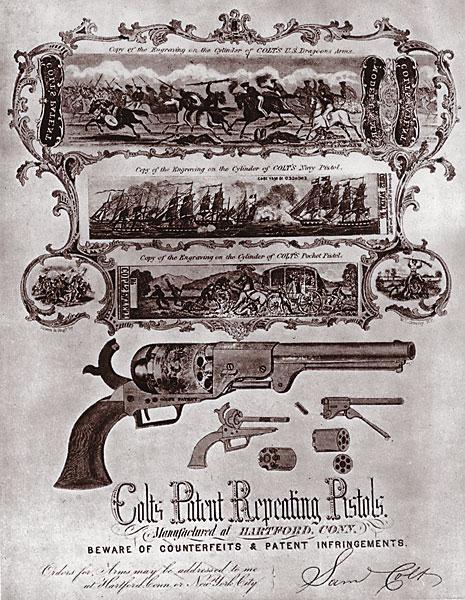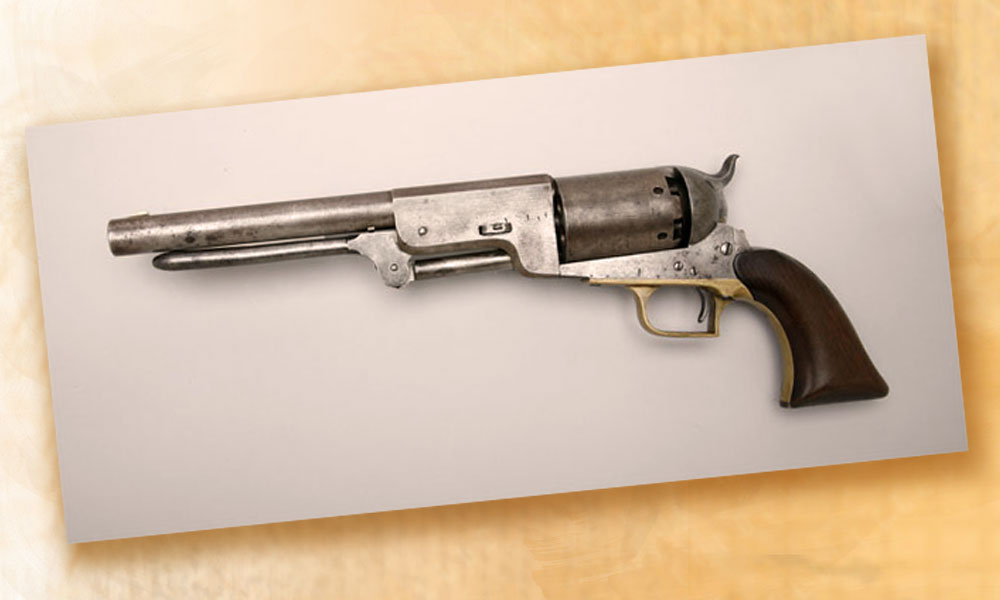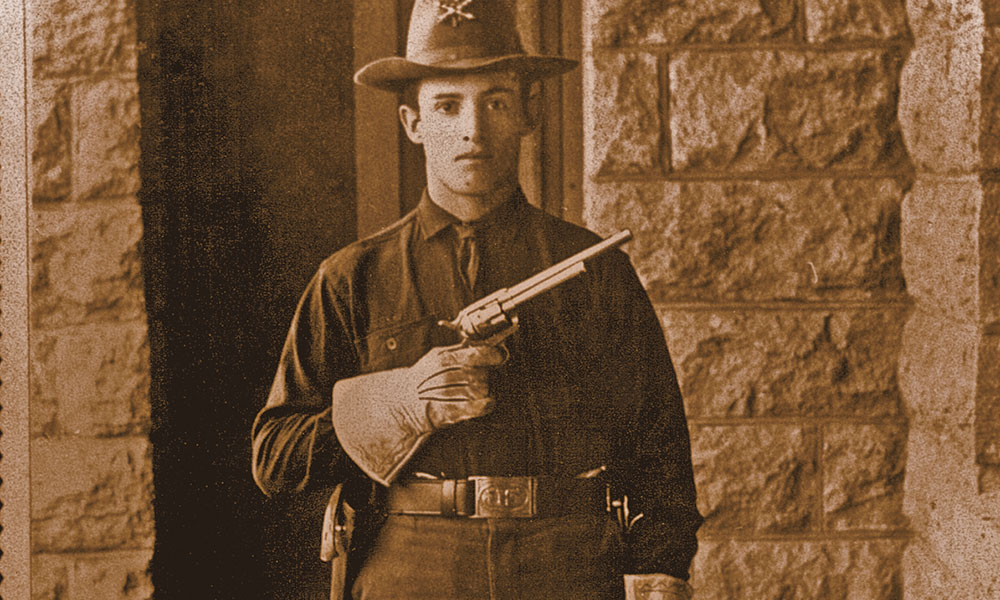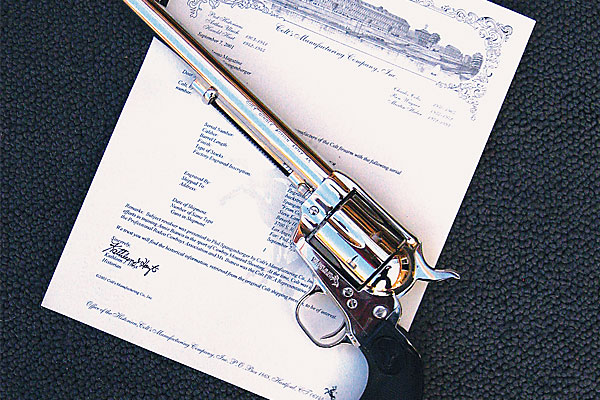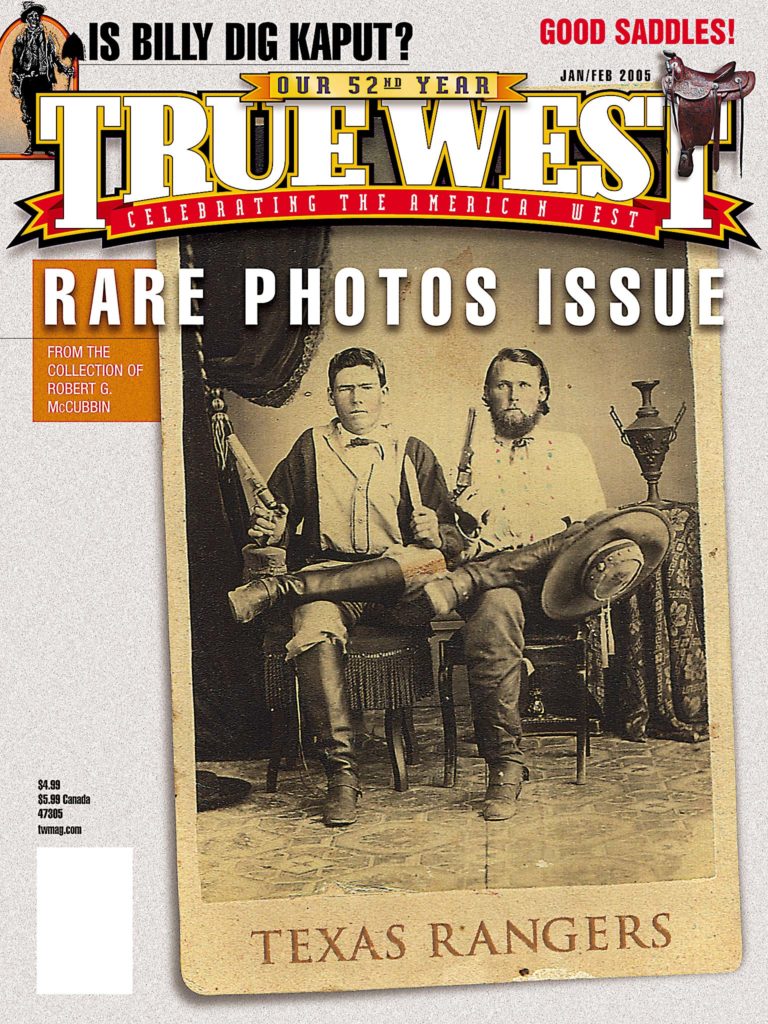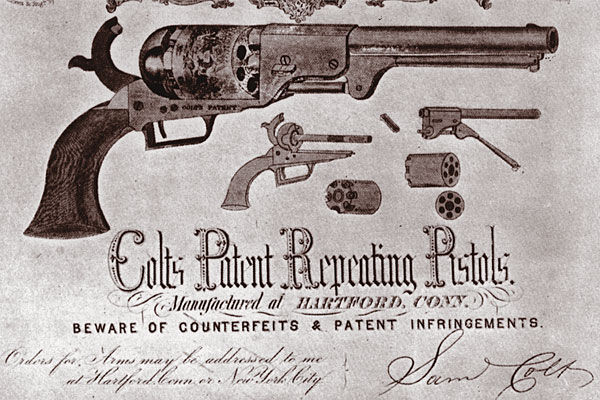 Have you ever wondered what the roll-engraved cylinder scenes on the old percussion Colts depict?
Have you ever wondered what the roll-engraved cylinder scenes on the old percussion Colts depict?
Some were added solely for the sake of decoration and customer appeal, while others pay tribute to people and events of historical significance.
Centaur
Early Pocket and Belt Model Patersons—Samuel Colt’s first efforts—depict variations (depending on the revolver’s cylinder size) of what is known as the “Centaur” cylinder scene, which shows a centaur shooting two horsemen with a revolver. Colt’s larger No. 5 Holster Model Paterson bears an illustration of a stagecoach holdup, portraying revolver-armed pas-sengers dispatching several highwaymen. Furthermore, Colt adapted variations of this theme on the late-production 1848 Model, all 1849 Pocket Models, certain 1855 Sidehammer revolvers and the 1862 Pocket Navy Models.
Ranger and Indian
The massive .44 bore Walker Model of 1847, the early .31 caliber 1848 Pocket revolver (the so-called Baby Dragoon) and the later full-sized .44 Dragoon all depicted a panoramic view of what is popularly called the “Ranger and Indian” scene. On these cylinders, mounted dragoons and Indians engage in a running skirmish, although the ’48 Model’s image is slightly abbreviated due to its cylinder’s smaller size.
This stirring roll-engraving pays tribute to a fight between Comanche Indians and Texas Ranger Capt. Jack Hays and his Rangers. This portrayal was added to the Walker and later Dragoons in honor of Hays and his Texians, whose effective use of Samuel Colt’s earlier revolvers was so important in the development of his arms. Legend has it that the picture is supposed to represent the fight between Hays’ Rangers and the Comanches at Enchanted Rock, near present-day Fredericksburg, Texas.
Naval Battle Tribute
Colt’s 1851 Navy revolver, 1860 Army Model and 1861 Navy Model all sport cylinder scenes of a naval conflict. If you look closely at the engraving on original Colts, as well as on some of the more detailed replicas, you’ll find the legend “Engaged 16 May 1843,” along with flags of the young Texas Republic and the early Mexican colors flying from the masts. This date, along with the nautical imagery, represents a naval battle in which Texas’ Commodore Edwin W. Moore defeated a superior fleet of Mexican warships (in both number of ships and their size)—a crucial event during Texas’ struggle for independence.
Cabin and Indian
The Model 1855 Sidehammer—a seldom-encountered Colt revolver, sometimes referred to as the Colt-Root Model—bore two different roll-engravings, depending on the barrel shape. Sidehammer ’55s with round cylinders and octagon barrels (fully fluted cylinders were produced undecorated) reveal what collectors refer to as the “Cabin and Indian” scene, showing an Anglo settler, armed with a brace of revolvers, warding off a band of Indians. Root revolvers made with round cylinders and round barrels were decorated with the familiar stagecoach holdup scene found on ’49 Pocket Models and other smaller Colts.
Regardless of the imagery used, factory roll-engraved cylinder scenes add flavor, interest and a bit of history to each Colt.
Photo Gallery
This Colt advertising sheet of the early 1850s shows the factory roll-engraved scenes used on various percussion revolvers, along with imagery of a First Model Dragoon. Interestingly, the pictures are depicted in reverse of how they actually appear on the revolvers.
– True West Archives –


